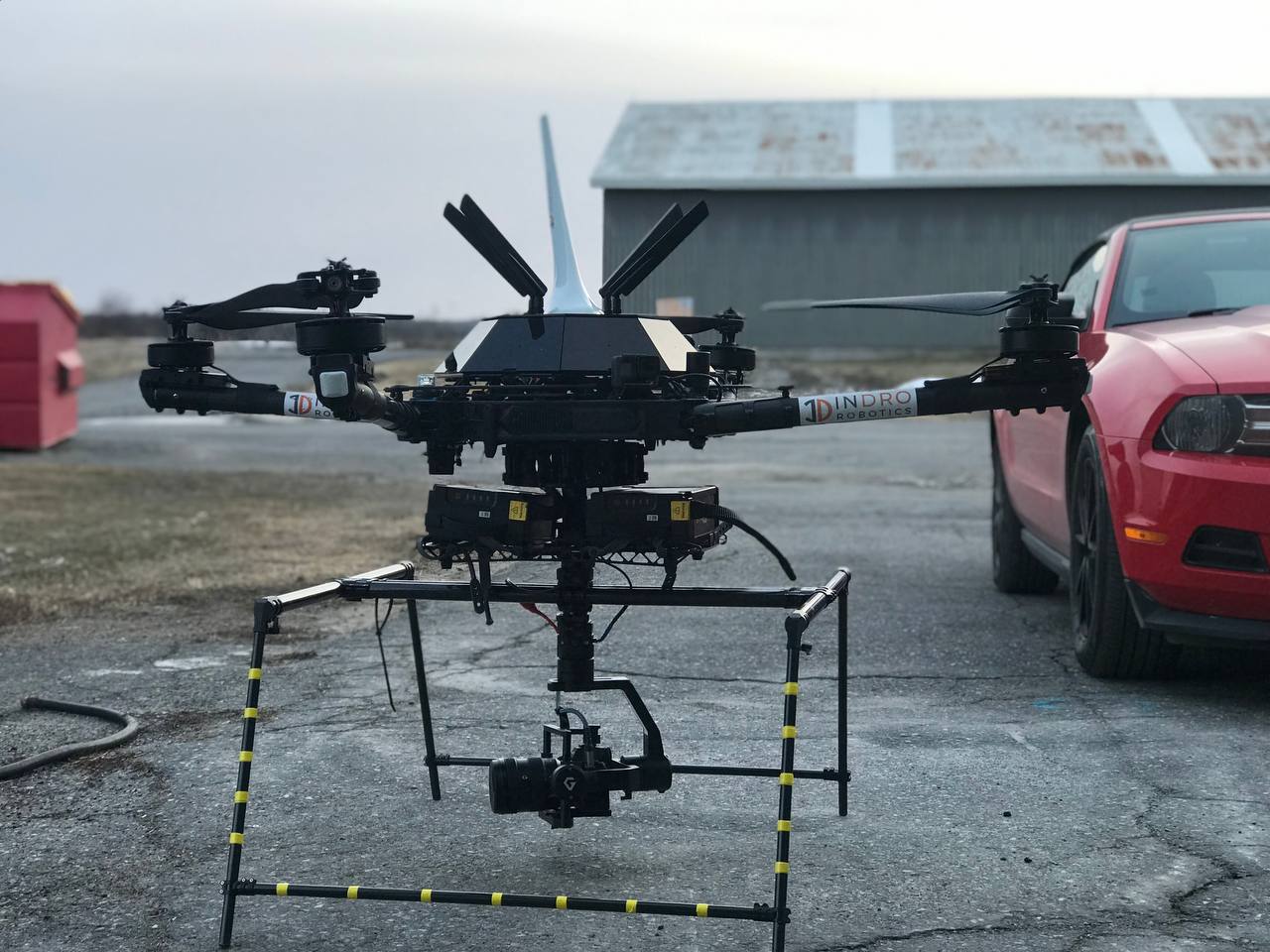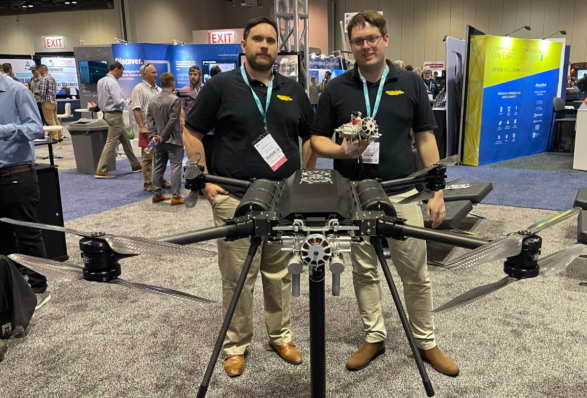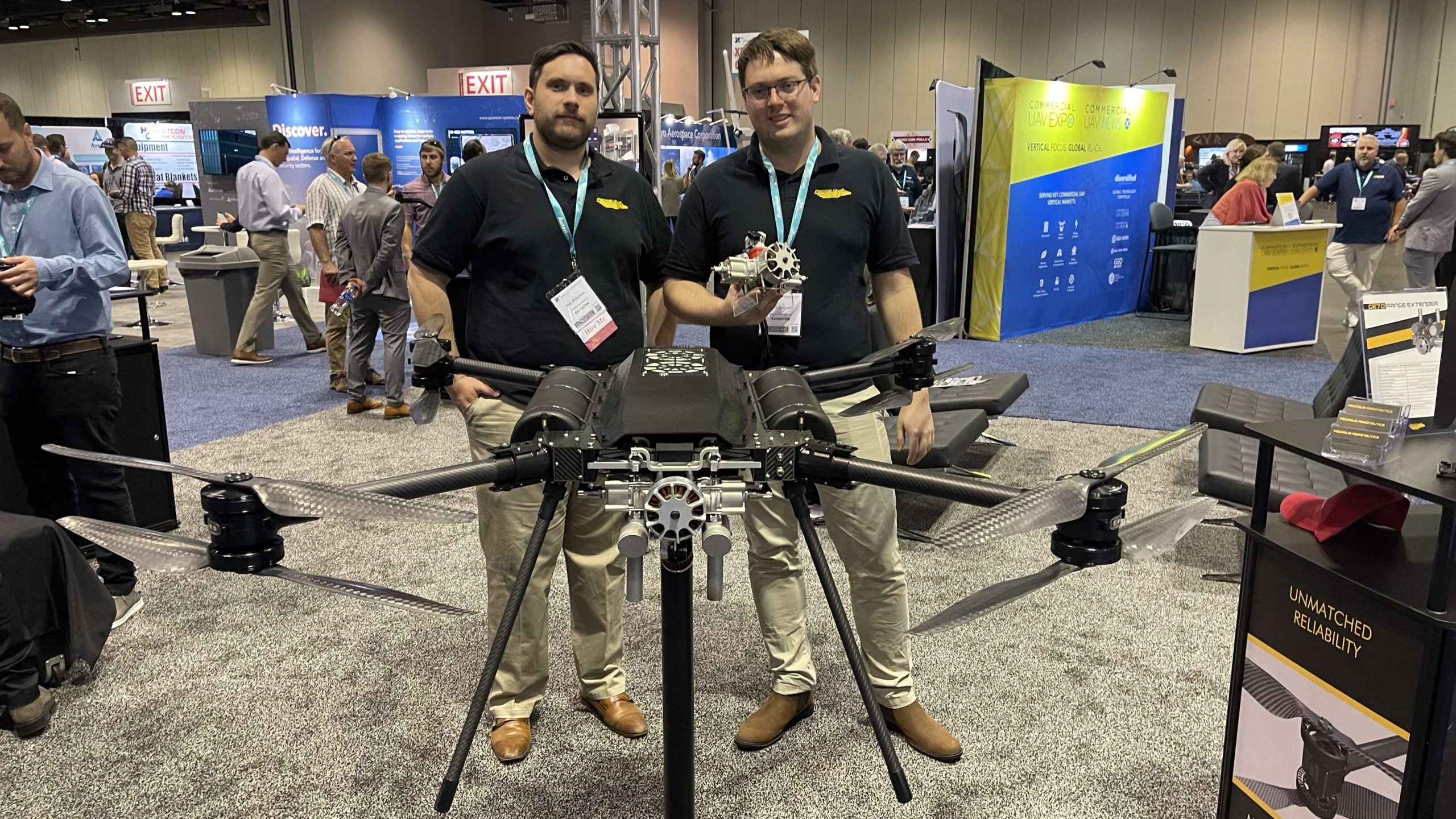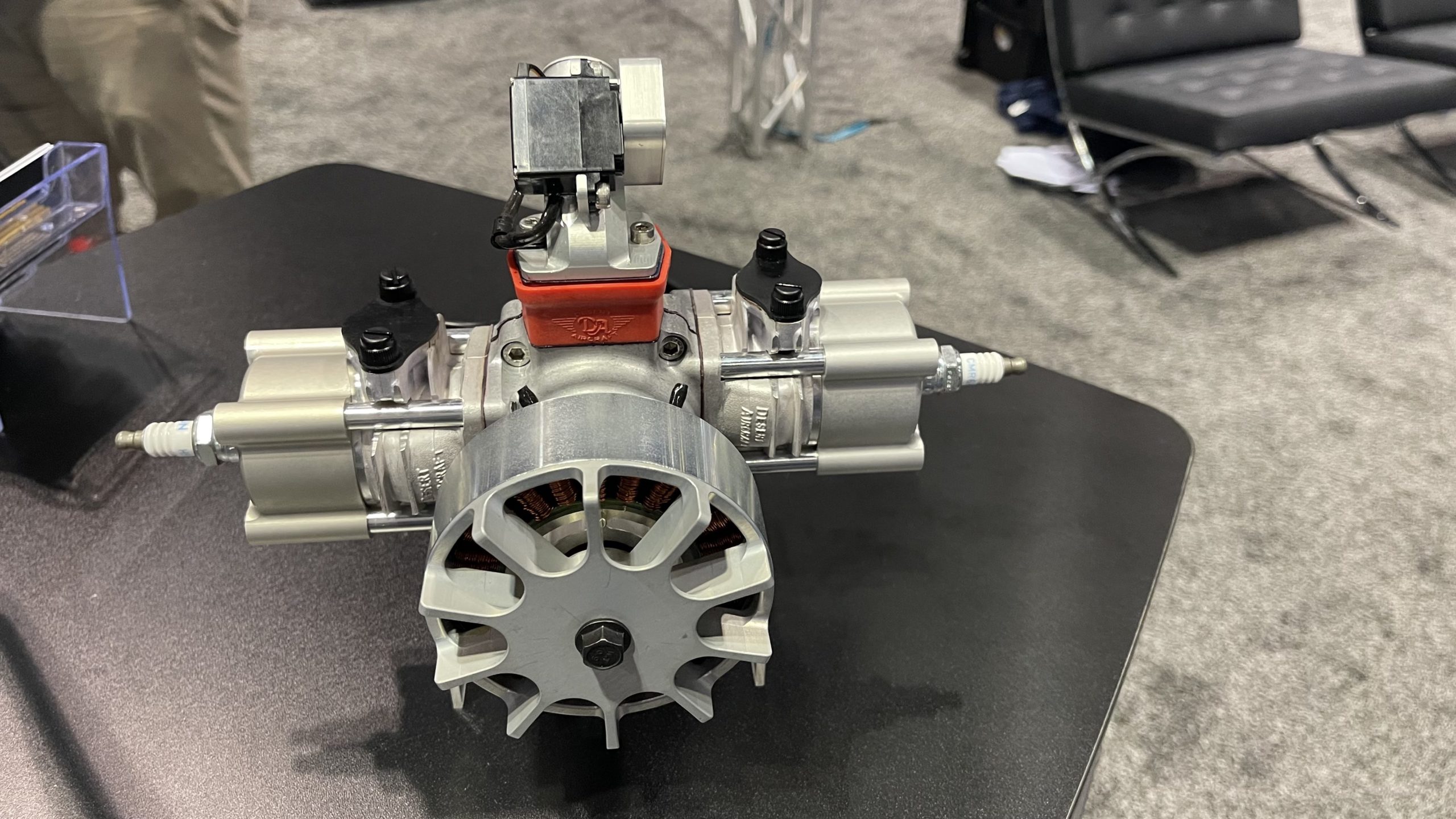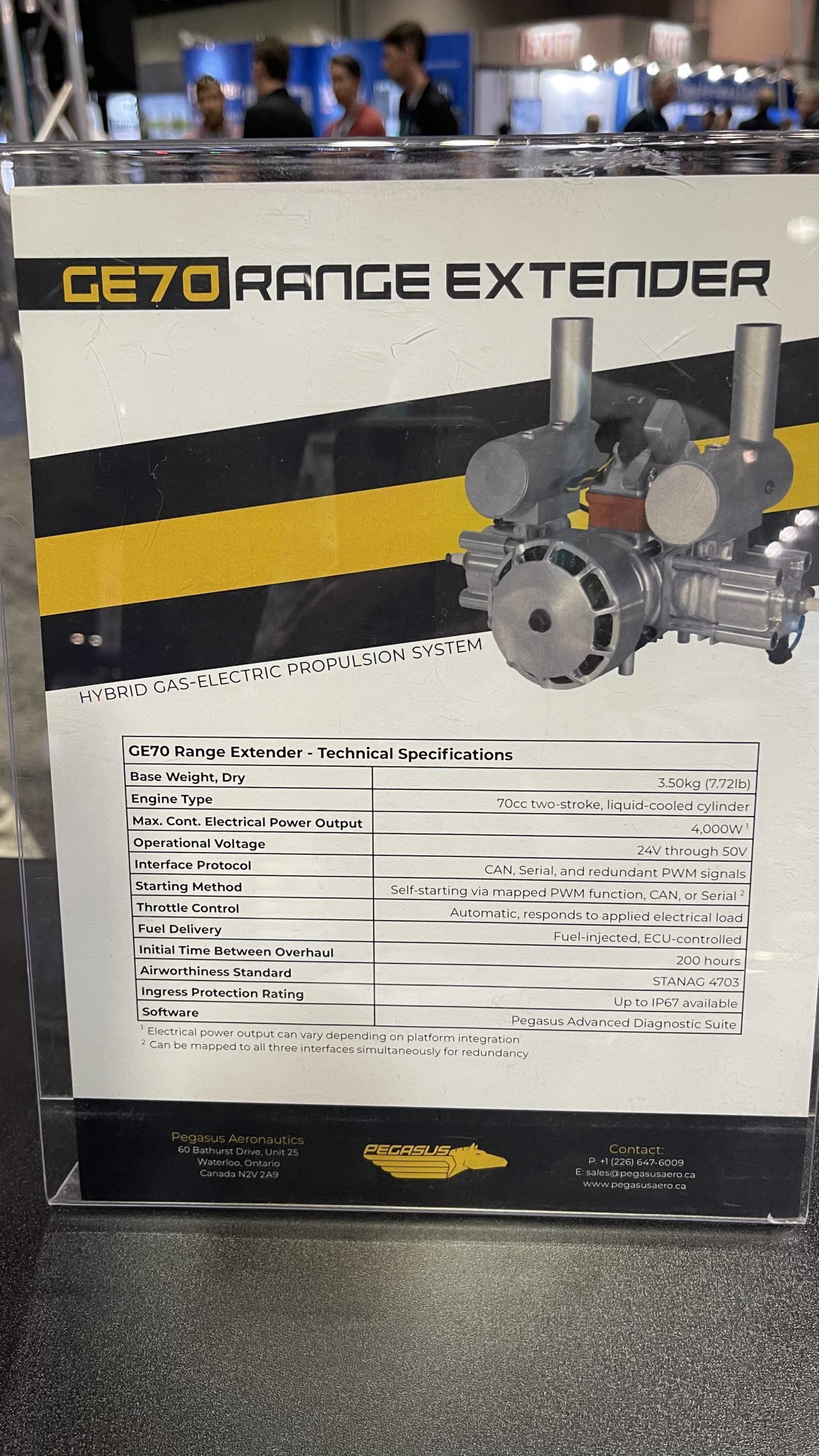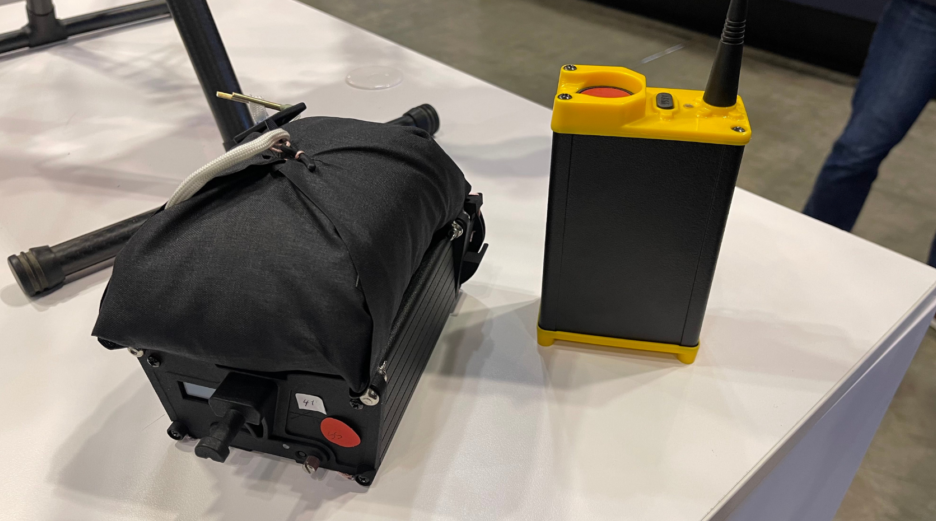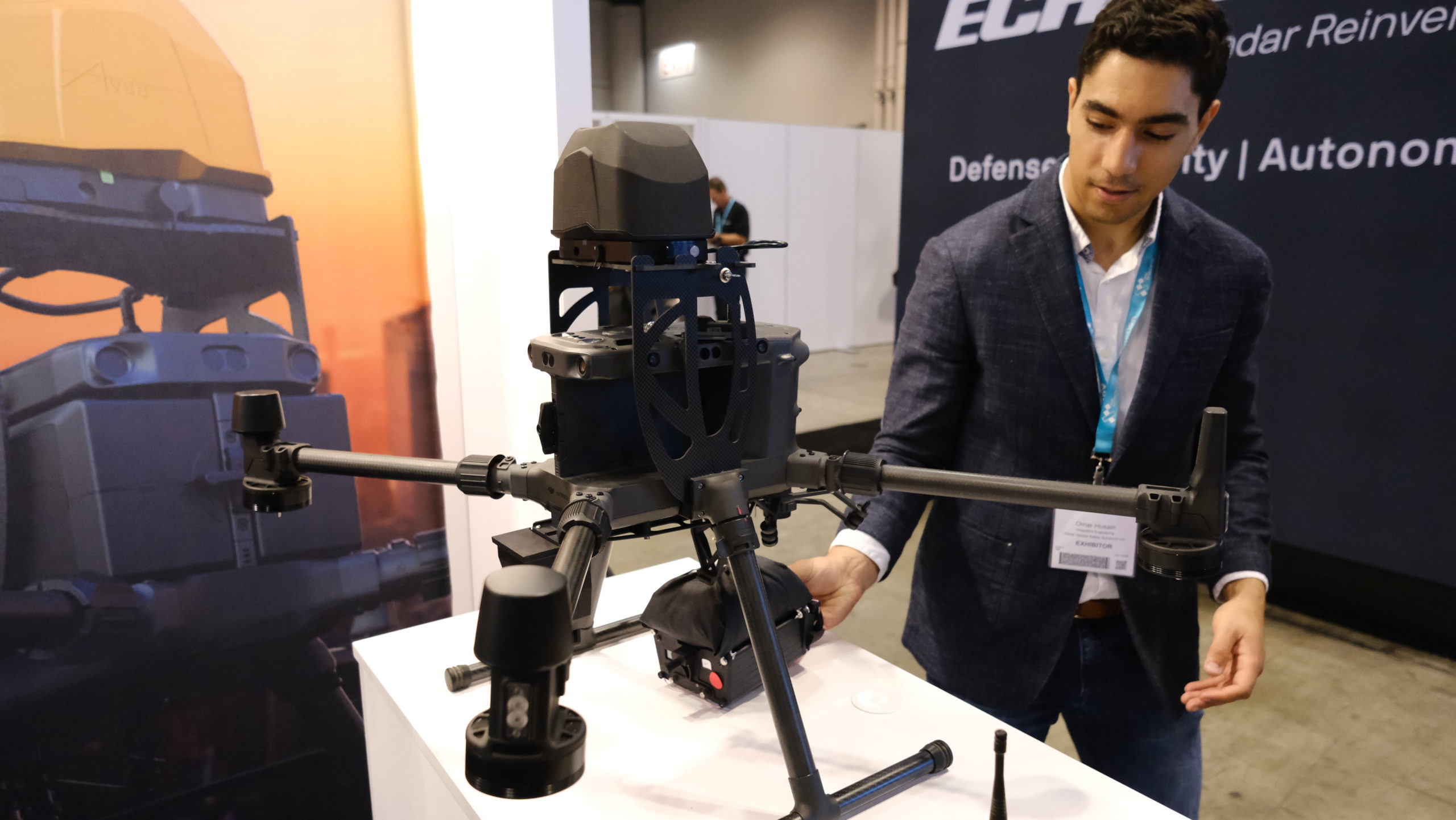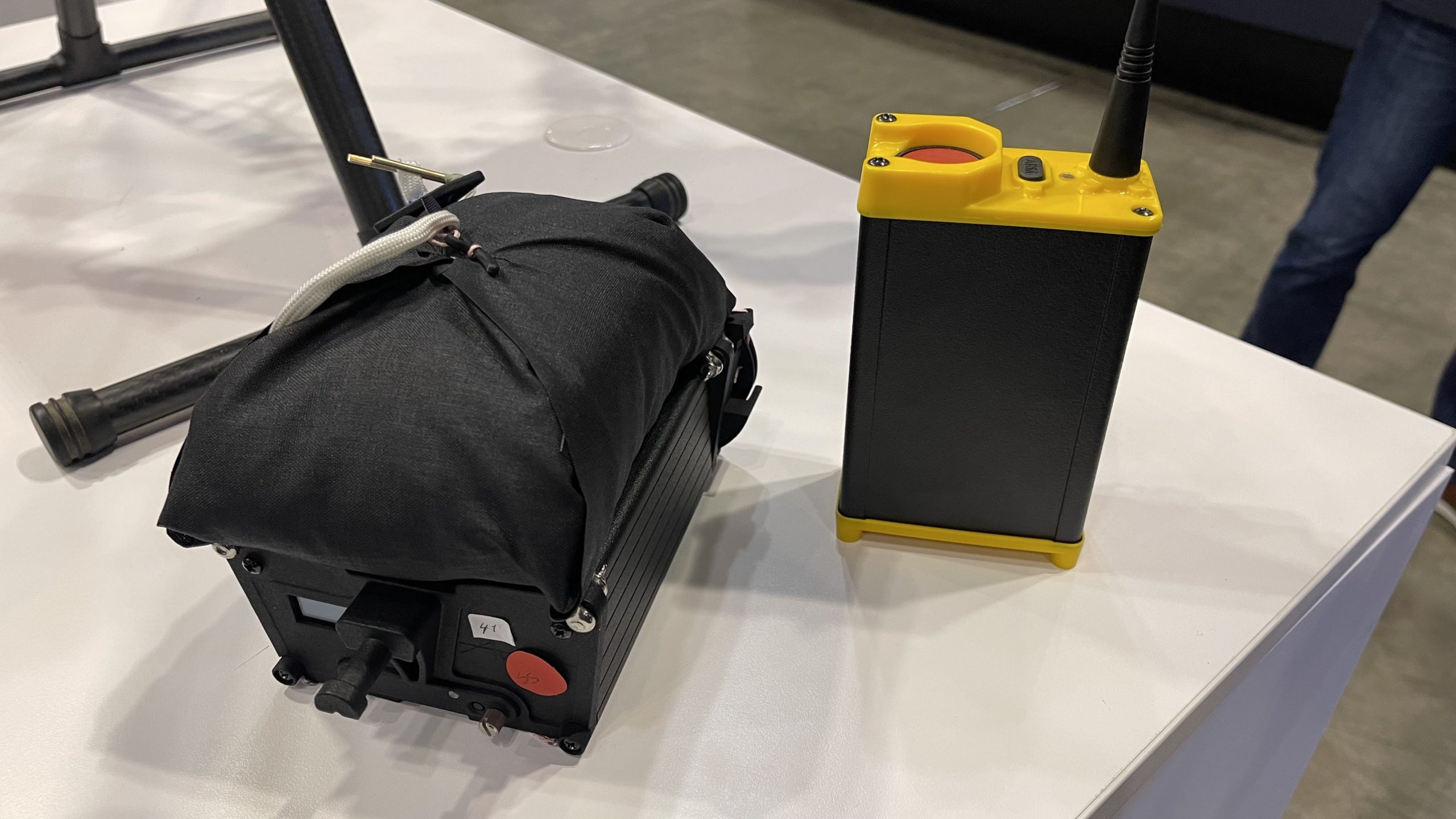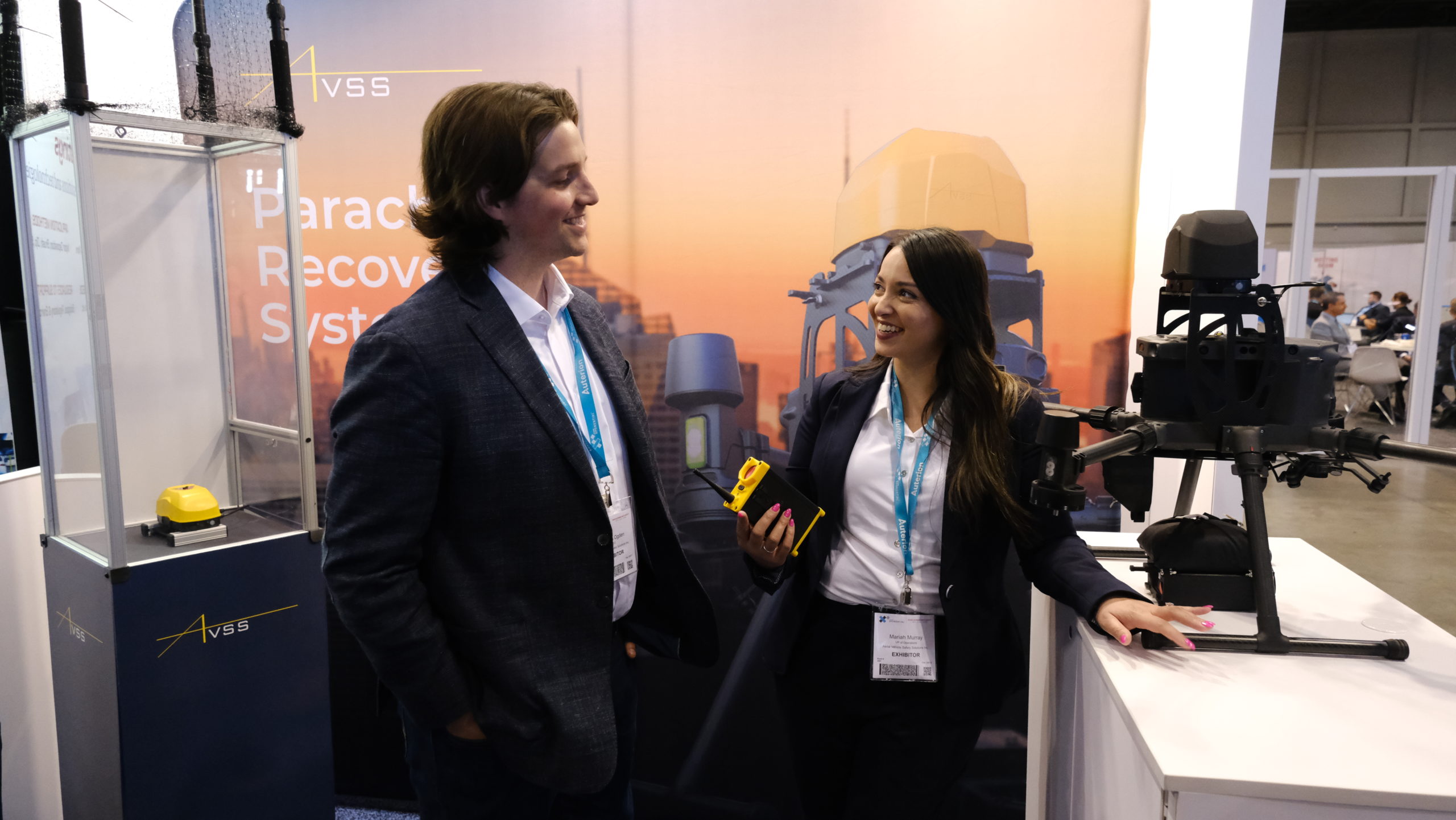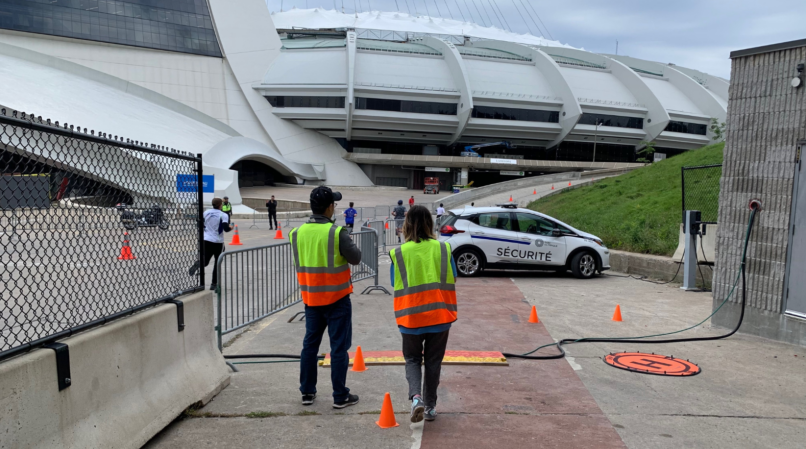
Indro Robotics provides live drone video feed at Montreal Marathon in pilot medical project
The Montreal Marathon, 2022 edition, was held over the weekend. The main event, the signature 42-kilometre run, took place early Sunday. And three InDro Robotics engineers were there.
They weren’t running, but were instead providing a live feed from drones. Those live feeds were being monitored on large video monitors by dedicated research assistants. They were assessing the quality of the feeds and their usefulness in detecting runners who might be in need of medical assistance.
Below: Team InDro, wearing safety vests, with Montreal Marathon runners on the right
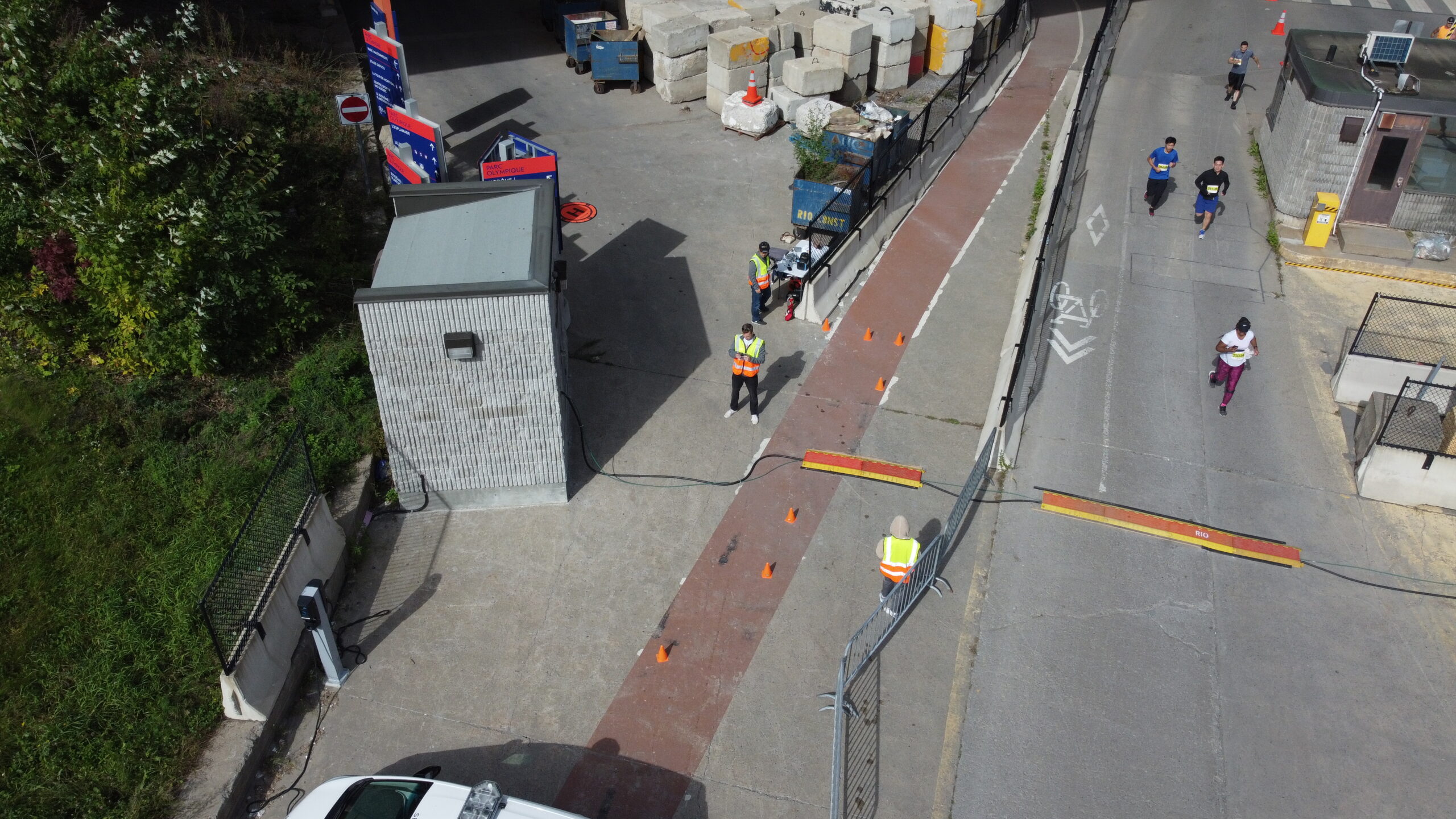
Research project
InDro became involved with this through Dr. Valérie Homier, an Emergency Physician at McGill University Health Centre. She has long had an interest in how drones can be used in the health care sector, and has collaborated with InDro on two previous research projects.
One of those projects evaluated whether drones or ground delivery could transport simulated blood products more efficiently to a trauma facility – the Montreal General Hospital. Drones were faster.
The second project studied whether drones could help identify swimmers in distress at an IRONMAN event in Mont-Tremblant. You can find that research here.
With the Montreal Marathon coming up, Dr. Homier knew there would likely be medical events. There generally are.
“In these long-distance sporting events there are usually some significant injuries, including cardiac events and heat strokes,” she says.
These tend to be more likely in the later phases of events like marathons, after the athlete has already been under stress for an extended time. The thinking was that perhaps drones could be a useful tool.
Dr. Homier was particularly interested in whether two drones in the air, covering two critical segments toward the end of the marathon, could provide useful data. Specifically, would the live video feed be consistent enough in quality and resolution to be a useful tool?
This pilot aimed to find out.
Below: An uphill segment near the Montreal Marathon finish line. This is was the target area for one of the Indro Robotics drones

InDro’s role
There was a lot of planning required for the mission to ensure the drones could provide continuous coverage and be safe for flying in an area with so many people. Project Manager Irina Saczuk (who happens to also be an RN) worked closely with Dr. Homier to help figure out the nuts and bolts of the InDro side of things.
InDro assigned three employees from the Area X.O facility to the project: Software developers Ella Hayashi and Kaiwen Xu, along with mechatronics specialist Liam Dwyer. All three hold Advanced RPAS certificates and took part in planning meetings to understand the mission and their roles. They also looked into optimising the drones’ video feeds to ensure the best quality would reach those monitoring remotely on large screens.
“At big-scale events such as this marathon, lots of people could go down with injuries,” says InDro’s Ella Hayashi. “But it can be hard to get timely support because roads are blocked. So drones have the potential to really help with sharing the precise location and other information when a person may need help.”
Worth noting here: The InDro engineers/pilots were not to be actively ‘looking’ for people in medical distress. Their role was simply to pilot the drones at the assigned locations and maintain a video feed that offered those watching the large-screen monitors with good situational awareness. In the event of an emergency, the pilots were to follow instructions, including moving in closer to a runner in distress.
Sub-250 grams
The team took four DJI Mini 2 drones to Montreal. Though InDro has a fleet of much larger and sophisticated drones the company has built, these consumer drones were perfect for the job. That’s because the Mini 2 is a sub-250 gram drone that can be flown near and over people. In the exceedingly rare event of a failure, the small device is unlikely to cause any substantial injury to someone on the ground. They’re also capable of very good video quality.
The team also used a third-party app – Airdata – to carry the video streams. The app created secure links for each drone’s feed that could be shared with those who would be monitoring the feed. Three drones were to be used in rotation so that two drones were always in the air providing live video at any given time. A fourth drone was onsite for backup.
“We modified the parameters and were streaming in 720p,” explains Dwyer. “We selected a lower resolution because on the bigger screen it didn’t have to be crystal clear but it needed to be smooth.”
There was, initially, some concern over whether the local LTE network would be able to handle the feed due to the large number of people using cellphones to capture and stream from the finish line.
“The night before the mission, a medical person told us there were going to be 20,000 people around the stadium,” says Xu. “We were worried about network connectivity, it was possible that our video streaming would not work. But actually the network was pretty good that day.”
Below is a drone selfie of the InDro team: From left to right, Kaiwen Xu, Ella Hayashi, Liam Dwyer
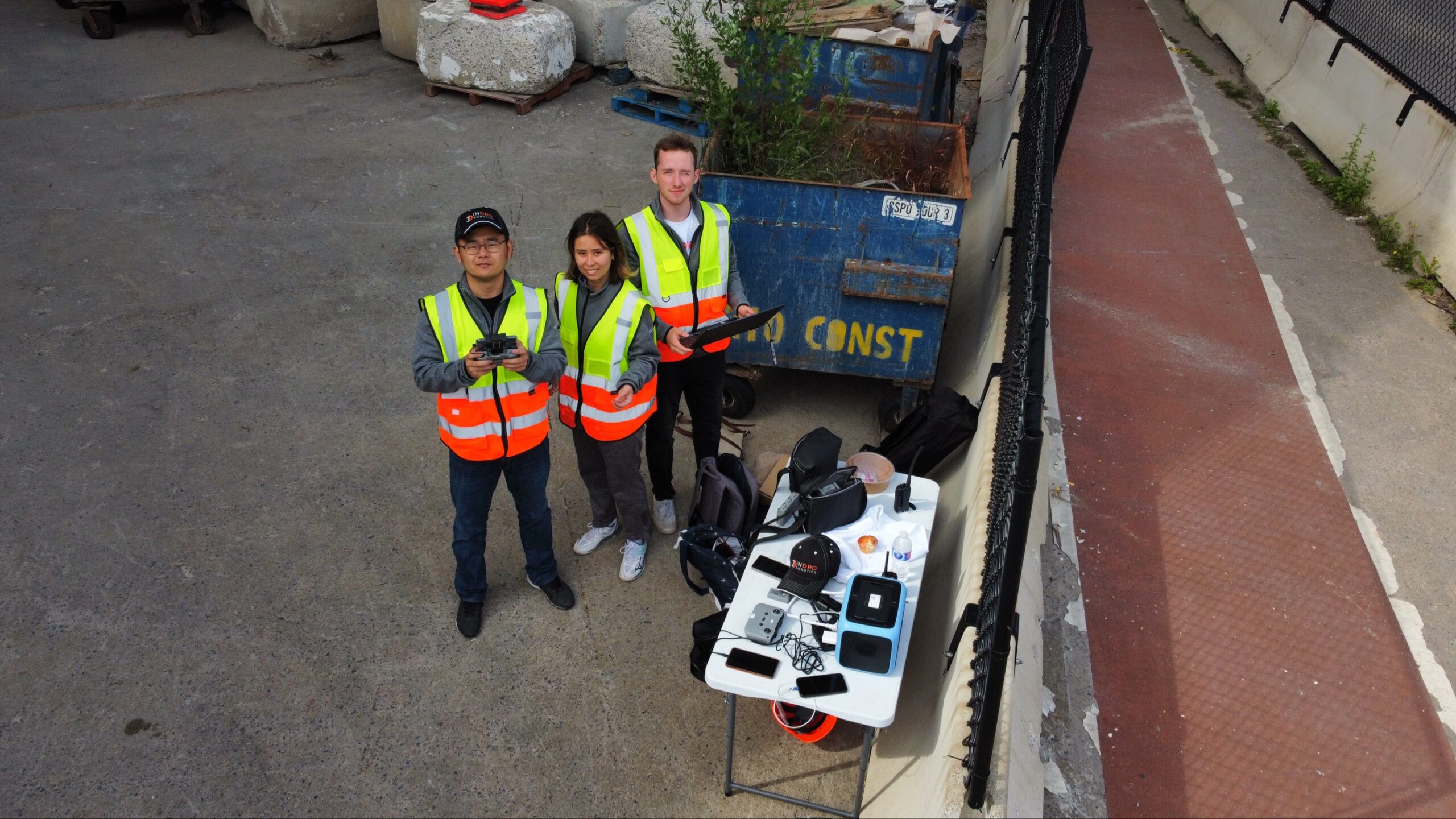
A useful exercise
Remember: This was simply a pilot project to determine if drones could provide a clean video stream that might be useful. The pilots were to focus on hovering the drones in two specific adjacent locations, with some overlap in their video to ensure they were not missing a spot of this critical part of the marathon.
“Our job was 100 per cent flying the drones,” says Dwyer. “Just straightforward, wide-angle shots with all runners in the field of view.”
We should mention here that InDro also took part in a simulated cardiac event prior to the marathon reaching this area. A medical dummy was placed in a location and one of the drone pilots was instructed to get closer for a better look. A small electric vehicle – think a large golf cart adapted for First Responder use – was dispatched. Chest compressions were performed on the dummy, which was then loaded into the vehicle. A drone followed as the vehicle drove to a nearby stadium and the victim was transported inside to the treatment area. The feed gave others on the Medi-Drone team an opportunity to see, in real-time, the progress of the patient’s arrival.
“The drone response really gave them an active timeline of when they should expect to receive this patient,” says Dwyer.
So the drones proved useful during a simulation. But how would they perform with runners during the actual marathon?
Below: The downhill segment monitored by InDro Robotics

From simulation to real-world
As the lead runners came in, the field wasn’t crowded. But, of course, it would become more congested.
When athletes are moving together en masse like this, Dr. Homier says there’s a certain flow that can be observed from the drone. Because that flow is consistent and smooth, a runner in distress literally pops up as looking out of place.
And it happened. Those watching the live feed spotted someone who appeared to be in distress. They had stopped, were hanging on to a railing on the side of the course. Then they fell over the railing, dropping to the grass. A drone pilot was asked to move in for a closer look. It was clear this runner needed help.
In fact, while the pilots were intended to simply hover their drones, Dr. Homier had anticipated such a scenario, and built it into the protocol for the pilot project. Suddenly, an InDro pilot had become part of a First Responder team, providing much-needed situational awareness.
“It was embedded in the research protocol, that eyes on the event becomes what is required,” she explains. “It was called into dispatch and pilots were able to provide eyes on the incident. That was amazing; dispatch came down after and brought us a radio.”
Lessons learned
For Dr. Homier, there’s still work ahead and a lot of data to be analyzed.
“There’s a lot to learn from this project, and there’s a way forward for multiple surveillance methods,” she says. “And the drones are way up there. The view from above when monitoring moving crowds is just incomparable.”
Plus, says Dr. Homier, the project sparked a tremendous amount of interest from other healthcare professionals on site.
“The interest was incredible, coming from the drone pilots, the students, the medical directors, the medical staff – they all thought it was so cool,” she says.
“We’re talking about 250 people involved in the medical team. Many came to see the viewing station, so in terms of letting people know about this new use of the technology – that was also a great success.”
Below: Mission accomplished! Team InDro is joined by key members of the marathon’s medical response team for this post-race drone selfie
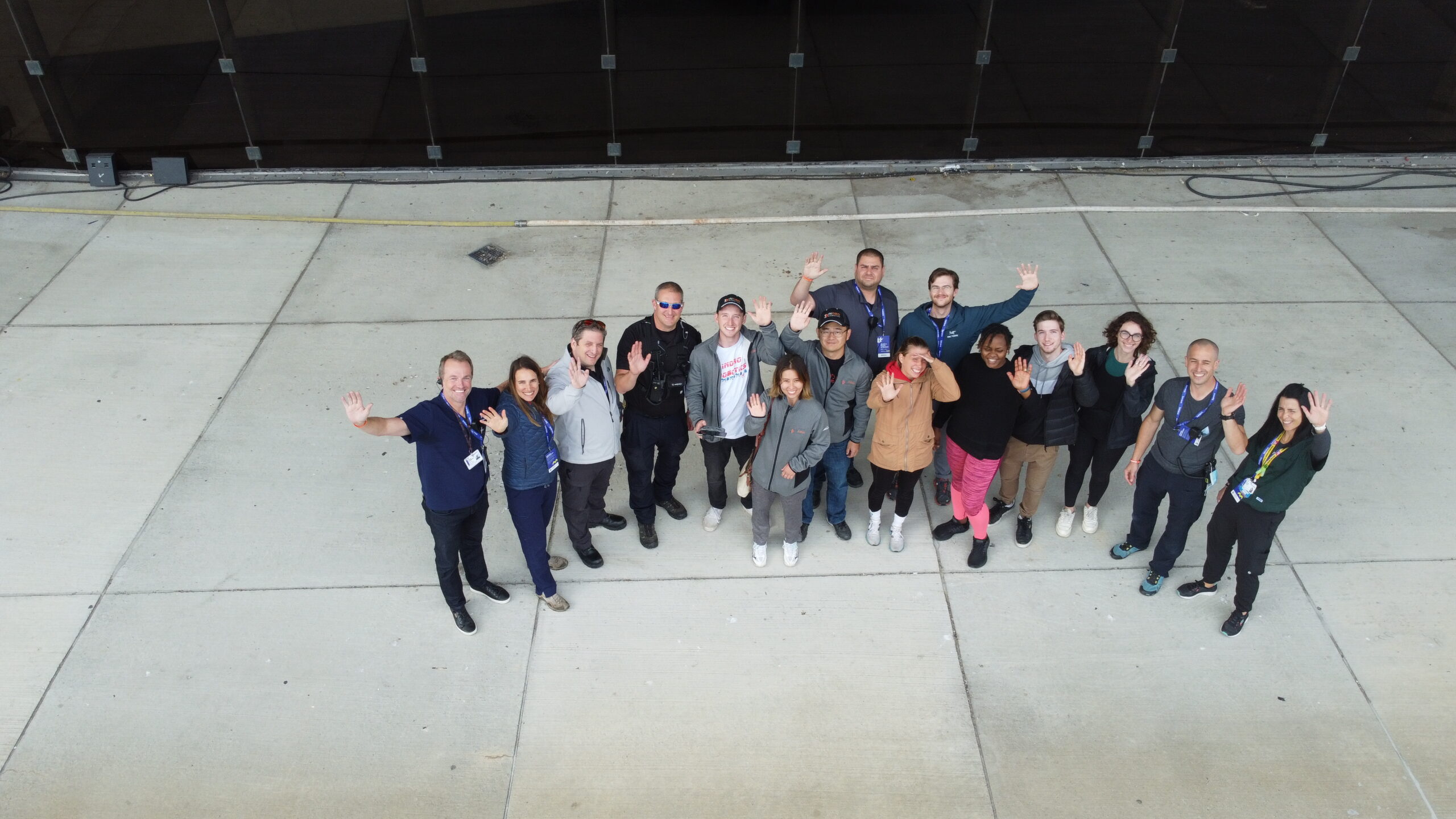
InDro’s take
We’re proud to be involved with this project – just as we’re proud to have collaborated previously with Dr. Valérie Homier on other research projects involving drones. In fact, we find this kind of research particularly meaningful.
“For us, using drones for good is much more than a catchy hashtag,” says InDro Robotics CEO Philip Reece. “Aerial and ground robots can perform so many useful tasks. We’ve helped securely deliver prescriptions to remote locations, COVID test supplies, and more. But playing a role in helping to ensure that someone in medical distress receives timely assistance is up near the top of the list. We look forward to the next project with Dr. Homier.”
And nice job, Ella, Kaiwen and Liam.
PS: We’ve issued a news release about this project. You can read it here.





